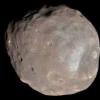Search the Community
Showing results for tags 'NDVI'.
-
HI guys. I am new to the forum, and also a bit to the world of remote sensing. I am looking at the moment for NDVI data, I need it for a porject about desertification. I found the MODIS NDVI data, but just since the year 2000. There is data available from before (since around 1982) from the NOAA AVHRR, but I cannot find it. Somebody knows about it, where I can get it from? and is this data also already processed (like the MODIS data), so that I just have to download the NDVI values? or can I just obtain the pictures with the different bands? Thanks for an answer! Raphael
- 5 replies
-
- 1
-

-
- NDVI
- NOAA AHVRR
-
(and 1 more)
Tagged with:
-
Hi all, I'd like to share a tool I created to automate the calculation of spectral indices for remotely sensed imagery. Currently, 22 spectral indices and the following sensors are supported: Landsat 1-5 MSS Landsat 4-5 TM Landsat 7 ETM+ Landsat 8 OLI Worldview-02 MODIS Terra and Aqua Just run the Python script (arcpy or GDAL) and use the GUI interface to select your sensor, indices to calculate, stacked image, and output directory. I haven't shared the tool yet and thus it has not been extensively tested. My personal tests have worked fine, but be sure to validate your outputs just in case! Please let me know if you run into any issues or bugs. I'm happy to address any questions. More detailed information and download here: Remote Sensing Indices Derivation Tool Happy remote sensing folks, Ryan
- 2 replies
-
- 2
-

-
- Python
- Remote Sensing
-
(and 5 more)
Tagged with:
-
down votefavorite i have a problem whem i am working to calculate the ndvi from landsat sattellite of rainy season i have assumed the pixel value above 15000 are clouds and calculate NDVI.then i am assigning the clouds pixel in ndvi 1. The main question is how to calculate zonal min max value of ndvi and percentage of cloud and percentage of ndvi greater than 0.5 in a particular zone.(zone are the vilage boundary of District). please help to solve this problem in arc gis.
-
Hi, I have a question I appreciate if somebody could help me. I need to estimate daily catchment scale evapotransporation. My catchment consist of irrigation farms ( varied vegetation type), Natural land , Small lakes and bare soil (almost 30 % of the catchment area). The study area located in semi arid region. I have already got ET-ref from weather stations in the area and prepared spline interpolated Et-ref map . I have got landsat R S image as well. Friend of mine suggested using average NDVI for the whole catchment and then use (Et =ET0*Kc, kc = 1.37 * NDVI-0086) equation. I am not sure if it is a good idea cause I have got large amount of negative value in my calculated Ndvi raster because of lakes and rivers . Furthermore I am not sure if NDVI is good choice for estimating ET in uncultivated area . Any advice? Cheers.
- 1 reply
-
- landsat
- evaporation
-
(and 1 more)
Tagged with:
-
Hi there I am working with an NDVI image and was hoping to correlate the NDVI values with plant species richness, as there have been a number of studies that have used NDVI to predict species richness. However, in the various habitats I get different values: Forest* - medium values Pine plantation - medium values Riverine - high values Tea plantation - highest values *The forest areas are of old growth forest which should have the highest levels of biodiversity. But instead the riverine areas (and tea plantation) has higher values. I assume this is as NDVI is more closely correlated to new, live vegetaion (which emits more chorophyll). I was just wondering if I there would be any correlation to the species richness in this case then? And if there are other aspects, or insights that I may be missing... Thanks in advance!


